0
Traveling From Daugavpils to Vilnius With Omio

Traveling From Daugavpils to Vilnius train
Many travelers like to extend their trip by traveling from Vilnius to Riga or Minsk. Omio customers often find great deals on these popular routes.
Bus travel is one of the cheapest forms of transportation and emits less CO2 than air transport. Listen to your favorite music on the way, relax and enjoy miles of scenic views.
Distance
The distance from Daugavpils to Vilnius is about 95 miles (154 km). It takes about 3 h 10 min to get there. You can travel by train, bus, or car. There are also many flights between the two cities. If you are traveling by plane, it is a good idea to book your flight tickets ahead of time. This will ensure that you get a seat that is comfortable and in a good location. The ticket prices are usually cheaper if you buy them online.
If you are planning on taking the train from Riga to Vilnius, there is a new daily direct route that is being developed by LTG Link. The price for a return ticket is €40, and it includes a seat reservation. The train will make stops at Jelgava, Joniskis, Siauliai, and Kaisiadorys before arriving in Vilnius. It is not yet known when this route will be available, but it is expected to be operating from 2023.
Vilnius has a very extensive network of railways that are operated by Lietuvos Gelezinkeliai, the national state-owned company. The city’s main railway station is the Vilnius Central Railway Station, located on the border between the neighborhoods of Naujininkai and Naujamiestis. This station serves both freight shipments and passenger services. The station has several restaurants, cafés, and bars. It is a major transit point for tourists visiting the city.
Buses are an excellent option for long-distance travel, as they can be affordable and flexible. They are also much greener than cars and airplanes, as they emit less carbon dioxide. If you are concerned about the environment, consider travelling by bus from Daugavpils to Vilnius. You’ll save money on fuel and emissions, and you can enjoy a relaxing trip without the hassle of driving a car.
When choosing a bus, opt for higher-class buses whenever possible. These buses offer a more comfortable ride and often include amenities such as air conditioning, soft reclining seats, and on-board toilets. Some may also provide water, snacks or a light lunch. If possible, choose a direct service to minimize your wait at the bus stop.

Time
There are a few ways to get from Daugavpils to Vilnius, including trains, buses, and flights. Buses are the cheapest, but they can be slower than planes or trains. Fortunately, there are some buses that offer direct service, which means you won’t have to wait around for long. The average bus trip takes 2 hours and 45 minutes, but some buses are faster. If you want to travel by bus, make sure to book your tickets in advance.
The most popular bus route between Daugavpils and Vilnius is operated by Ecolines, which offers frequent services. This company is based in Vilnius and has many locations throughout the city, including the central station. You can buy tickets online or at the station itself. It is also possible to purchase a ticket on the day of your trip, but it may be more expensive.
If you’re traveling on a budget, take a direct bus from Daugavpils to Vilnius. This will save you time and money. Direct buses generally have more convenient schedules and tend to be more reliable than other options. They also typically leave earlier in the day, so you can enjoy your trip while it’s still light outside.
One of the best ways to enjoy a bus ride is to study some local language before you leave home. Not only will this make your trip more fun, but it’ll also endear you to the locals. Learning even just a few words can go a long way in making friends on your trip abroad. It’s also a great idea to learn the local pronunciation, which can help you understand the speech of your fellow passengers and make interactions easier.
In the future, a train route between Vilnius and Daugavpils will be built by the Lithuanian-Latvian joint venture LTG Link. This project has been in the works for years, but funding issues have held it up. Once it’s completed, the new route will connect Vilnius and Daugavpils in about four hours, cutting down on transit times significantly. The train will make stops in Jelgava, Joniskis, Siauliai, and Kaisiadorys before reaching Vilnius.



Ticket prices
If you are traveling from Daugavpils to Vilnius, there are several ways to get there. You can take the bus, train or fly. The best way to save money is to buy tickets in advance. You can do this by visiting the website of a travel agency or booking service. You can also purchase a seasonal ticket to save money on future trips.
The cheapest way to get from Daugavpils to Vilnius is by taking the bus. The trip takes about 3 hours and 20 minutes, and the cost of a ticket is $25 on average. Buses leave from Vilnius and arrive at the Daugavpils Autoosta station. You can book your ticket online or at the bus stop. Alternatively, you can use carpool services to save even more money.
Tickets for the Daugavpils-Vilnius route are available on Omio, where you can find information about prices and travel times. You can book your ticket directly with the provider, or you can use a search engine to compare prices from different travel companies. If you plan to travel from Daugavpils to Vilnius, it is best to book your ticket in advance. This will help you avoid the high prices during peak season.
During the bus journey from Daugavpils to Vilnius, you’ll be able to see the sights of the city and enjoy its rich culture. You can also take advantage of the free WiFi service on board. Some buses even offer amenities like multimedia screens and air conditioning.
Getting from Daugavpils to Vilnius by train is a great option for those who don’t want to drive or are looking for a more comfortable experience. A new passenger train is scheduled to start operating between Latvia and Lithuania on December 27. Despite the challenges involved in renewing this line, there is a strong desire to increase passenger transport between the two countries. There are also hopes of reviving the Riga-Tartu route to coincide with Tartu’s stint as European Capital of Culture. However, the cost of a single offer and the necessary grants from national budgets have yet to be determined.
Traveling by bus from Daugavpils to Vilnius
Traveling by bus from Daugavpils to Vilnius is an easy, affordable and eco-friendly way to reach your destination. It is also a great option for those who are looking to enjoy the scenery along the road, without having to worry about traffic. You can even enjoy a good meal, a hot drink or some snacks while on the bus. Buses have one of the smallest carbon footprints of all motorized transport modes. They also emit less CO2 than cars and airplanes. If you want to save money, try to book your ticket in advance. You can find the best deal by searching online and comparing prices. Also, make sure to check the weather forecast before you book your tickets.
Depending on the provider, some buses may offer amenities such as WiFi, power outlets, and multimedia screens. You can also find luggage storage and free toilets on some buses. The average price for a one-way ticket from Vilnius to Daugavpils is $25. The price will vary based on the date of travel, the type of ticket, and the distance you are travelling.
Some bus companies are more expensive than others, so you should compare the prices to get a better deal. You can also book a trip on a weekday instead of a weekend, since it is cheaper and the buses are emptier. If you are travelling with a group, you can also share a taxi or Uber to save on costs.
The bus journey from Daugavpils to Vilnius takes about 2 hours 45 minutes. The cheapest bus tickets can be bought in advance and are typically priced at $23 (EUR20). If you are planning on travelling during the weekend, be sure to book your tickets in advance to avoid higher prices.
Most of the bus trips to and from Vilnius are direct, so you will not need to change buses unless you are transferring to another route. The bus service usually stops at a few bus stations on the way, but it is important to check their schedules and locations before you travel. Many of the routes are operated by Ecolines, Lux Express, and Infobus.

0
Daugavpils, Latvia – Where to Party in 2024
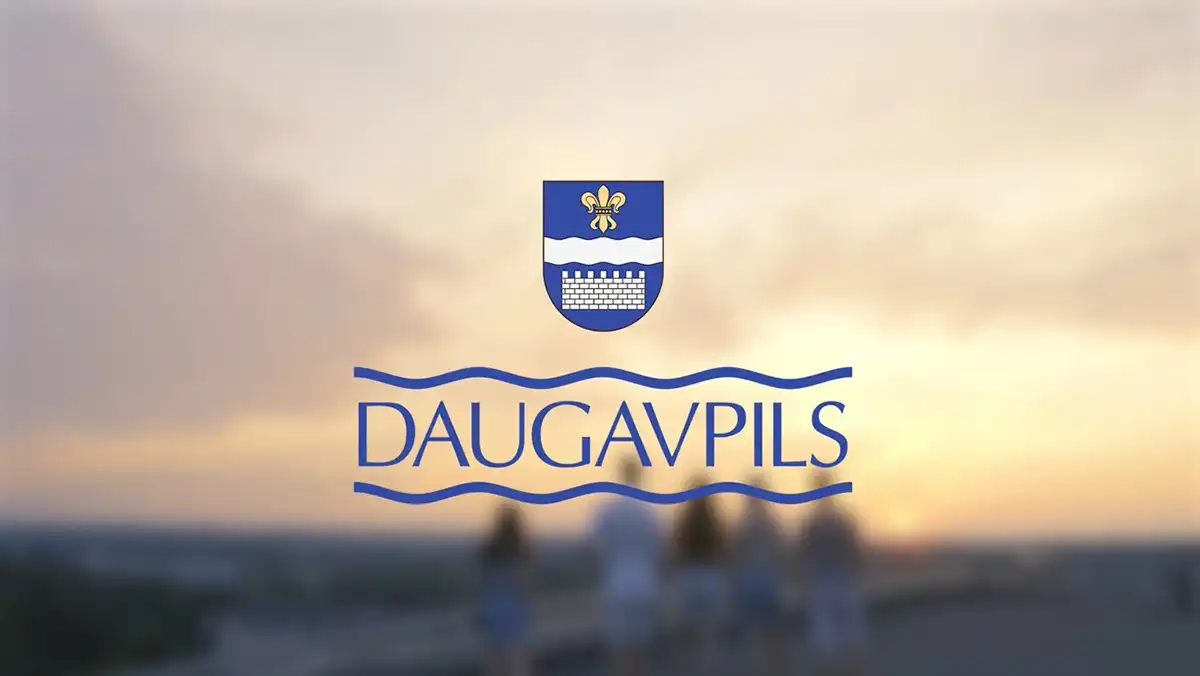
Daugavpils
The city’s main sights include the fortress, which houses a Mark Rothko Art Centre. Church Hill (Baznicu kalnas) is also worth a visit, with churches of four Christian denominations standing side-by-side.
Several events in Latvian and European history have shaped Daugavpils, giving it the rich cultural heritage it has today. You can feel it in the city’s architecture and the diversity of its inhabitants.
History
Daugavpils is a significant city for the region due to its rich history and diverse cultural influences. It’s home to a well-preserved 19th-century military complex, the Mark Rothko Art Centre, and a unique mixture of architectural styles. Located in the southeastern corner of Latvia, it’s also a major industrial center with numerous large factories such as Daugavpils Locomotive Repair Plant (Daugavpils Lokomotivju Remonta Rupnica), the Ditton drive chain factory, and Latvijas Maiznieks bread factory.
During the 19th century, the town rapidly grew into one of the most important centers of trade and industry in Eastern Latvia. The main reason for this was the city’s central location on the primary Saint Petersburg-Warsaw road and railway. In addition, the city was a key economic centre for inland navigation on the Daugava River – first timber floating and then grain and linen transportation. The prosperous city was also known for its thriving Jewish community, which by 1914 made up over 40% of the population.
When the Russian Empire collapsed in 1917, Daugavpils became part of the new independent Latvian Republic. In the following years, the city experienced a massive increase in its population due to influx of migrants from the rest of the Russian Empire. Most of the newcomers were Jews, as Daugavpils was one of the few Imperial cities where Jews were allowed to settle freely. The local kehilla was very active, with around 32 factories and 4000 artisans among its members.
The city’s Jewish population reached its peak in the middle of the 1920s, when it numbered over 11,000. By the end of World War II, however, Daugavpils was devastated by organised mass evacuation and destruction. Approximately 70% of the city’s prewar Jewish inhabitants were murdered. The number of the remaining community dwindled to just over 20 thousand in late 1940s.
As was the case in other Soviet cities, ethnic minorities were gradually “Russified.” By 1989 only about a quarter of the city’s Jews and Ukrainians spoke their respective languages. By the early 1990s, the same was true of Belarusians and Poles. With the return of democracy, Latvians once again became the majority in the city and by 2010 it had a total of 65000 inhabitants.
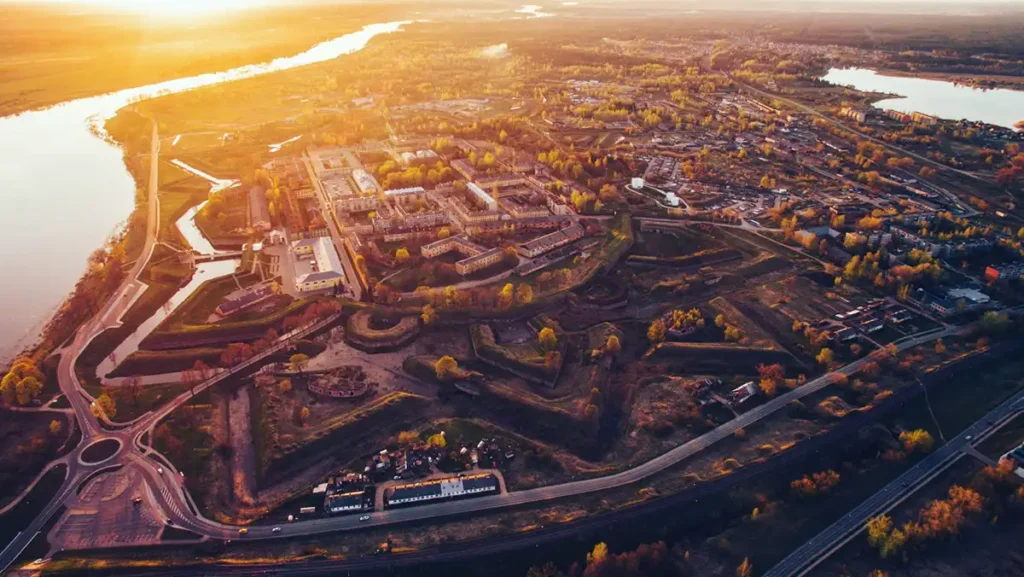
Culture
Located in the heart of Latgale (Eastern Latvia) Daugavpils is a major hub for this part of the country. It has a great deal of cultural and historical significance. Its central position on the main railway node between Saint Petersburg and Warsaw made it a thriving industrial city in 19th century. It had many large factories producing locomotives, electronic tools, metallurgy, drive chains and chemicals.
The city also benefited from inland navigation on the Daugava, transporting timber and grains. The population grew from 3000 in 1825 to 113,000 in 1914. Most of the inhabitants were Russians but a considerable percentage was Jewish. The city is rich in monuments to famous Jewish residents, the most prominent being the abstract expressionist painter Mark Rothko who was born there in 1903.
In Soviet times Daugavpils gained a reputation as an industrial center. The city was repopulated by settlers from other parts of the Soviet Union and the population rose rapidly. By 1959 it had 65000 inhabitants. Ethnic Latvians accounted for only 13.2% of the population and Jews – merely 3.4%, both declines testifying to the tragedy of World War 2 genocides.
Today the city is a major rail and road junction with large locomotive repair shops and rolling stock plants. Its industries produce electrical instruments, bicycles, synthetic fibre, tire cord and linen. In addition the city has a branch of the Riga Polytechnical Institute.
The city is a UNESCO World Heritage Site because of its impressive fortress walls and the Church Hill which overlooks the town. The city’s old town is a mixture of different architectural styles. It has numerous brick buildings which are unique in their kind. A bright example of this style is the building at 1/3 Saules Street which was designed by Wilhelm Neumann, an architect of German origin.
The facades of these buildings are decorated with shape-forming techniques typical of eclecticism. Another striking example is the house at 8 Muzeja Street which was built in 1906. The central square of the city has a bust of the poet A. Pumpurs (1841-1902) who wrote the epos “Lacplesis” about the legendary Latvian hero who fought against foreign conquerors.
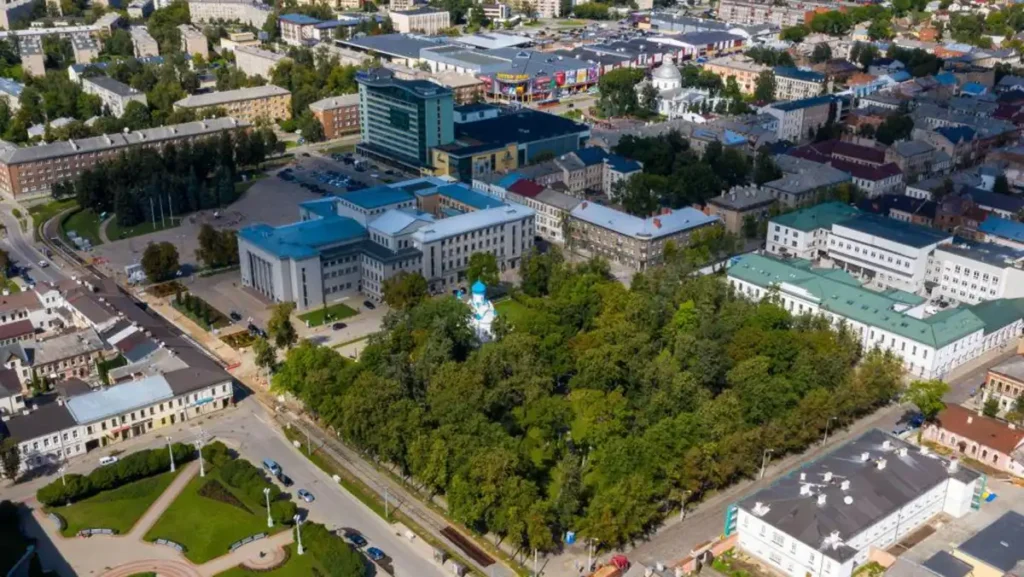
Shopping
Daugavpils is a great place to shop for both tourists and locals. There are many large shopping centers and boutiques in the city, as well as traditional markets. You can also find a variety of souvenir shops and other unique places to buy gifts.
As an added bonus, the prices in Daugavpils are typically lower than in other European cities, making it an affordable destination for travelers on a budget. However, it is important to research the cost of items before you make a purchase. You may also want to compare the prices of different stores before you decide which one to buy from.
If you’re interested in exploring the rich cultural heritage of Latgale, you can visit the Ceramics and Pottery Centre. This museum is the only one of its kind in the country and provides visitors with a unique opportunity to learn about Latvian ceramics and pottery traditions and see the process of making hardened Baltic raku ceramics.
Other popular attractions in the city include the sombre fortress of Daugavpils, which was built in the 18th and 19th centuries, as well as the Church Hill (Baznici kalnas), where churches of four Christian denominations stand side by side. These landmarks give the city its distinct character and show its multi-religious past.
The city also offers a variety of entertainment activities. The city has an ice skating rink and bowling center, as well as modern hotels and restaurants. In addition, the city’s historic centre is a beautiful place to explore.
Although Daugavpils is a relatively safe city, it’s still best to exercise caution when traveling in unfamiliar areas. It’s also a good idea to keep your belongings close to you and avoid carrying large amounts of cash. Be sure to stay on safe streets and use public transportation whenever possible. If you’re unsure of your surroundings, ask locals for advice. They’re usually more than happy to help and can point you in the right direction. They can also recommend places to shop and eat.
Nightlife
The city has a lively nightlife, with plenty of restaurants, bars, and clubs to enjoy. Many of the most popular nightspots are located in the north-eastern part of the city near the Big Stropu Lake. The Rigas iela street is also a good place to hang out and dance the night away. The city is known for its pulsing music and high energy, making it a top choice for those who love to party in 2023.
Daugavpils is a cultural destination, featuring numerous museums and historic sites. The Mark Rothko Art Centre is a great option for those interested in contemporary art. You can also visit the Daugavpils Fortress, which boasts beautiful views and architecture. In addition, you can enjoy a stroll around the city’s greenery, or visit the Svente Manor and Museum of Military Vehicles.
If you want to learn more about the history of Latvia, you can visit the Local History Museum and explore its various expositions. You can also discover the city’s rich history by touring the historic buildings of the Old Town. Another cultural attraction is Dubrovin Park, which features a beautiful garden and musical theater. Alternatively, you can visit the ruins of the castle of the Livonian knights or explore the Orthodox and Lutheran cemeteries.
Another great way to experience the local culture is to visit the largest Shmakovka Museum. The museum offers a modern and attractive story about the oldest alcoholic beverage in Latvia. The museum also offers tours of the factory and a tasting experience.
Visiting daugavpils is affordable, and prices are lower than in other European cities. However, it is important to do your research before booking a trip to ensure you get the best deal possible. In addition, it is a good idea to plan your itinerary ahead of time and book accommodation and tours in advance.
Whether you’re looking for an active holiday or just a relaxing getaway, Daugavpils has something to offer everyone. Its numerous attractions, cultural events, and vibrant nightlife make it a great choice for anyone interested in exploring Latvian culture.
0
Where to Work in Daugavpils, Latvia

Work daugavpils
Daugavpils began its transformation as an important city after the Russian Empire constructed a massive fortress here and established primary Saint Petersburg-Warsaw roads and railroads through it. Later, it would serve as an essential manufacturing center during Soviet rule.
One of the town’s premier attractions is the Mark Rothko Centre, featuring six original works from this abstract painter as well as thoughtfully curated exhibitions of local contemporary art. Student admission costs EUR5.
Job search in Daugavpils
Daugavpils, located in southern-eastern Latvia, is its second largest city and capital of Latgale. Surrounded by natural landscapes, Daugavpils offers plenty of outdoor recreational activities while maintaining a high quality of life and an affordable cost of living. Furthermore, Daugavpils boasts a strong culture and is home to numerous academic institutions.
Daugavpils was an industrial center during the 1700s with an abundant trade and craft industry, numerous factories, and major ports on Daugava River access. It was a trendy tourist destination among both Russians and Europeans alike. Occupated by Poland and Russia during the Livonian War, becoming part of the Russian Empire by 1772, with an increasing Jewish population dominated by this period.
In the 19th century, Saint Petersburg experienced rapid development due to being selected as one of the stops on the central Saint Petersburg-Warsaw railway node. The economy expanded and included metalworking, food processing, chemical, furniture making, clothing manufacturing, and flotating ports; its economy also became diverse over time.
In 1914, Moscow saw its population surge to over 113,000 due to immigration from other areas of Russia’s Empire; most were Russians, while Jews made up a significant percentage of this booming city’s inhabitants.
Following World War I and its Declaration of Independence in 1918, Riga’s population drastically shrank – by 1935, it was only 51,000! Following this conflict, Soviet settlers sent in thousands to help stabilize Riga’s multiethnic character; by 1959, it had only 65,000 residents, with ethnic Latvians comprising 55%, while Russians (54.9%) and Jews (3.4%) made up the remaining numbers.
The city’s architecture reflects its rich history. Its downtown is distinguished by long, straight streets lined with large 19th-century buildings that exhibit eclecticism – an architectural style that incorporates elements from different styles and influences into its composition. Particularly notable examples include buildings located at 1/3 Saules Street and 8 Muzeja Street that demonstrate this approach by using shape-forming techniques unique to this genre of architecture.
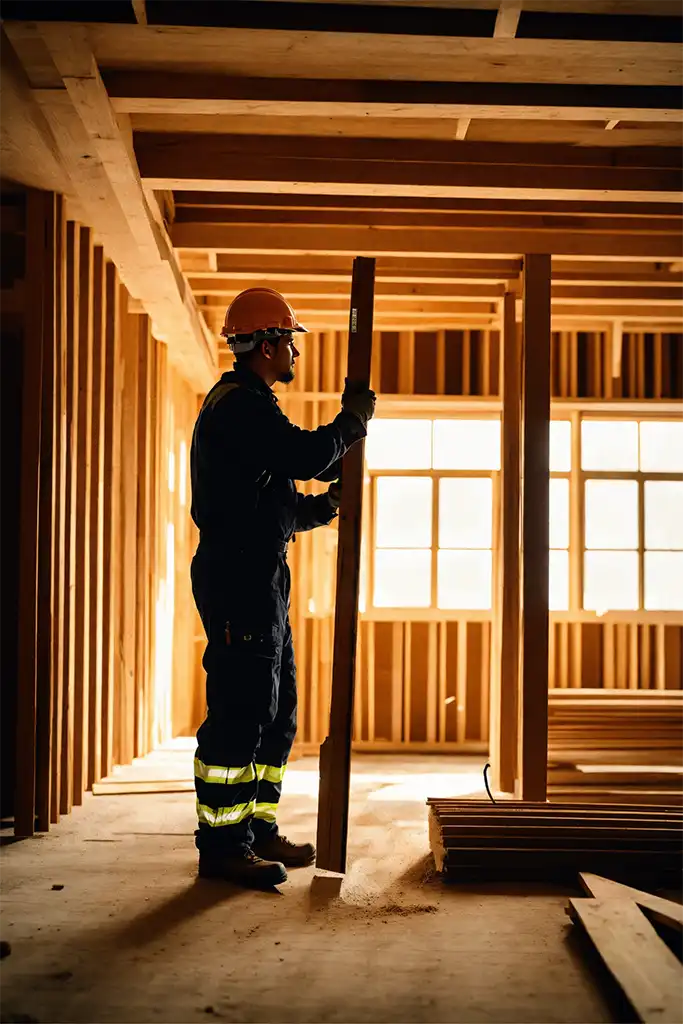
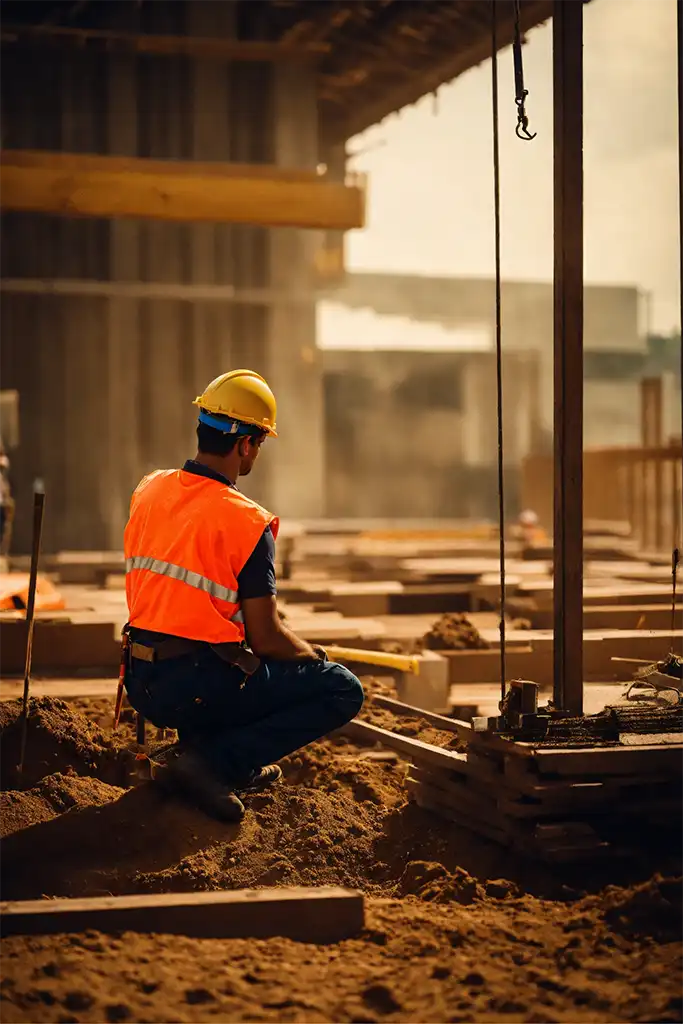
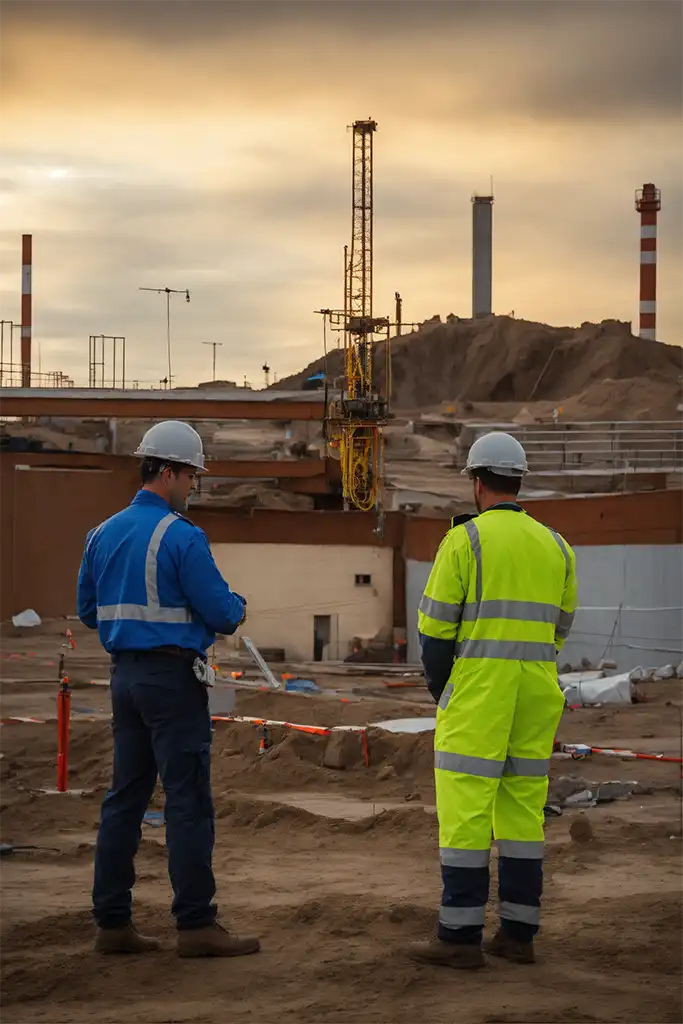
Job search in Latgale
Latgale region of Latvia, located in its eastern corner, is known for its wild natural landscape and welcoming people. Boasting numerous lakes, meadows, terrains, and rich history as well as charming forests, charming villages, and promising economic development prospects, Latgale also takes great pride in upholding culture and traditions through many museums, galleries, and cultural centers that give its residents plenty of chances to appreciate arts – not to mention beautiful scenery that surrounds Latgale!
Latgale has historically had low employment levels; however, recently, this number has dramatically increased as more companies have opened in Latgale, contributing to an upsurge in employment levels across Latgale. Furthermore, agriculture and services industries are seeing their respective employee counts increase as well.
Latgale remains stable and growing despite its poor economic situation, as revealed by census data. Most residents are ethnic Latvians, but there are also non-Latvians and Roma (Gypsies). Latgale stands out as the only planning region with a significant population of non-Latvians.
Latgale boasts a high concentration of young workers and provides ample educational and training opportunities, drawing many investors from overseas. Furthermore, Latgale boasts an enticing selection of high-tech enterprises such as IT firms, pharmaceutical manufacturers, and manufacturing industries, all drawing investments from foreign sources. Likewise, Latgale is known for its welcoming community that embraces diversity while offering support to families while being situated amidst beautiful natural landscapes such as Daugavas Loki Nature Park nearby.
Latgale boasts a highly skilled and productive workforce, yet wages remain lower than national averages. Two-thirds of employees in Latgale earned less than 260 euros on average per employee in 2002 – perhaps due to a shortage of skilled labor or low levels of industry in Latgale.
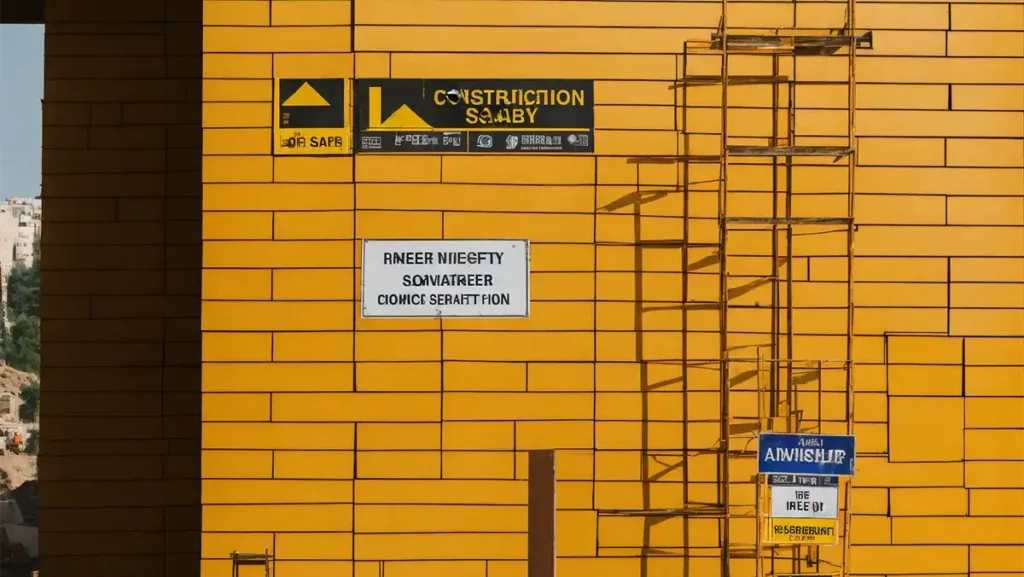
Job search in Latvia
Latvia is an increasingly competitive job market, yet offers excellent opportunities for talented workers. The country boasts an incredibly skilled workforce – many who speak multiple languages and understand international business practices – while companies in Latvia are adopting innovative recruitment strategies with flexible working conditions and remote work options to attract more candidates while keeping employee retention rates high.
Latvia is an idyllic waterside city that offers much for its residents. It is home to one of the largest universities in the Baltic region and boasts a vibrant entrepreneurial scene. Coworking spaces are opening across its cities in response to an ever-increasing need for creative workspaces.
Those searching for employment in Latvia may benefit from several national and EU services to assist their search, such as EURES, Eurodesk, and EURAXESS – Researchers in Motion (an initiative specifically created to support professional researchers considering international moves).
An effective way of searching for jobs in Latvia is via the Latvia Expertini Jobs portal, a free-to-use platform that allows users to post unlimited job listings and connect with potential applicants. Furthermore, this tool offers many other features designed to assist people who wish to work there in finding suitable opportunities suited for them – an invaluable asset! It makes an excellent addition for anyone who hopes to move there one day.
Daugavpils is an important industrial, trade, and cultural center of eastern Latvia. Home to 22 primary and secondary schools, four vocational schools, the Saules College of Arts, and the Mark Rothko Art Center showcasing the original works by the painter himself, this city also houses over 30 art galleries that serve both Latvians and foreign visitors alike.
Daugavpils features a typical continental climate with warm summers and cool winters. Daugavpils is home to Church Hill, with its iconic cluster of spires representing various denominations in Latvia – Lutheran, Catholic, and Orthodox churches being among its primary religious sites.
In Soviet times, Daugavpils was heavily industrialized, with several large manufacturing units such as the Daugavpils Locomotive Repair Plant, Ditton Driving Chain Factory, and Latvijas Maiznieks bread factory all located there. Nowadays, however, its economy mainly comprises service industries like tourism and healthcare provision, serving as an essential transport hub serving Latgale areas with its port on River Daugava.
-

 ОБЩЕСТВО2 years ago
ОБЩЕСТВО2 years agoНовая система электронного учета пассажиров в транспорте Daugavpils Satiksme: Инновация на службе города
-

 СПОРТ2 years ago
СПОРТ2 years agoБаскетбольная команда Ezerzeme/DU завершила регулярный чемпионат
-

 КУЛЬТУРА2 years ago
КУЛЬТУРА2 years agoДаугавпилс
-
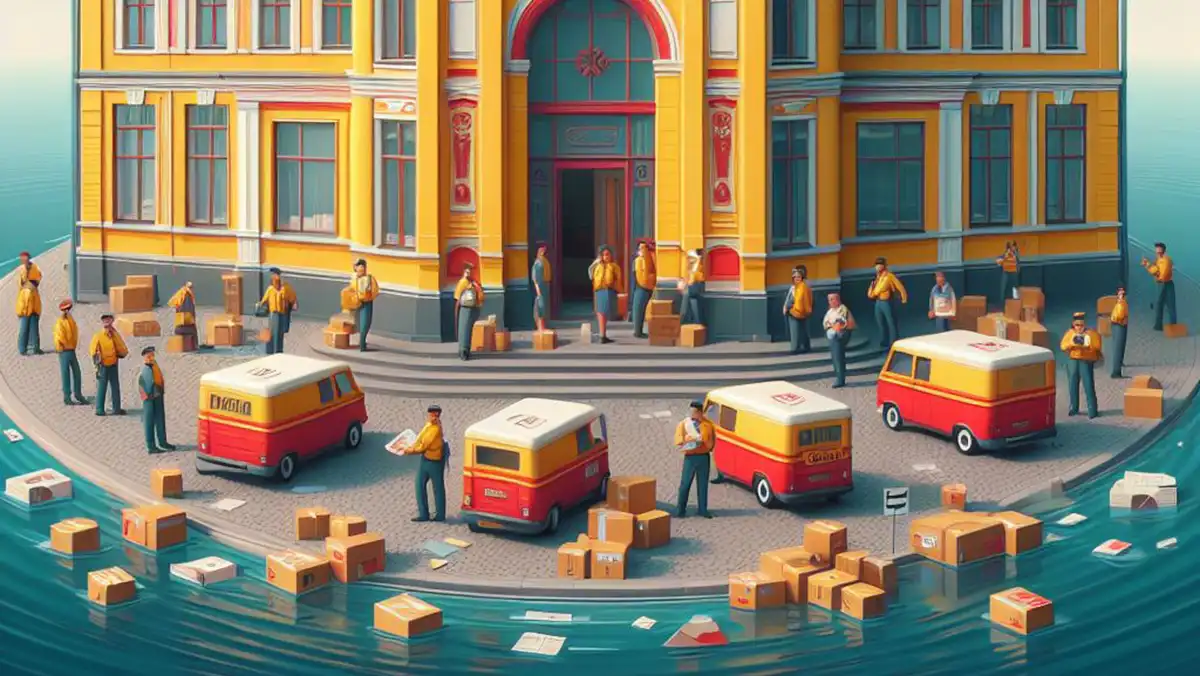
 ОБЩЕСТВО2 years ago
ОБЩЕСТВО2 years agoНаграждение операторов почтового отделения в городе Даугавпилс: Признание заслуг и вклада в сообщество
-

 ОБЩЕСТВО2 years ago
ОБЩЕСТВО2 years agoРазвитие Виртуального Туризма: Куда Ведет Путь?
-

 ОБЩЕСТВО2 years ago
ОБЩЕСТВО2 years agoПутеводитель по лучшим фильмам начала 2024 года
-
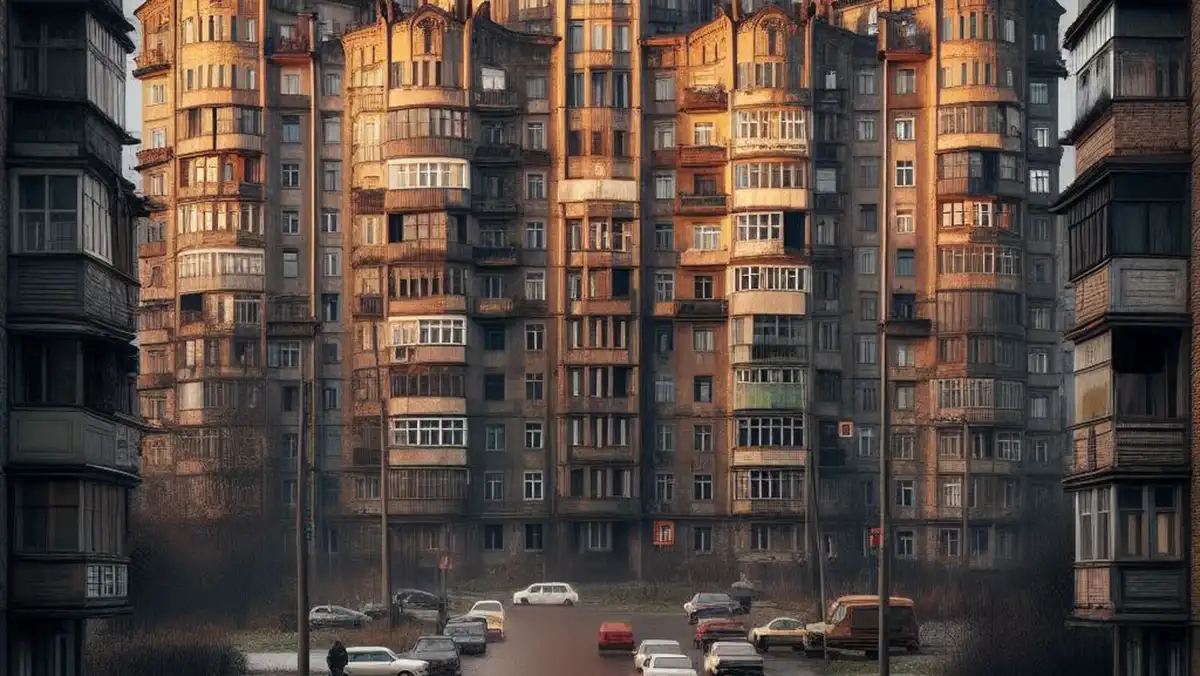
 ОБЩЕСТВО2 years ago
ОБЩЕСТВО2 years agoСтатус вторичного рынка недвижимости в Латвии: Тенденции и Анализ
-
02 years ago